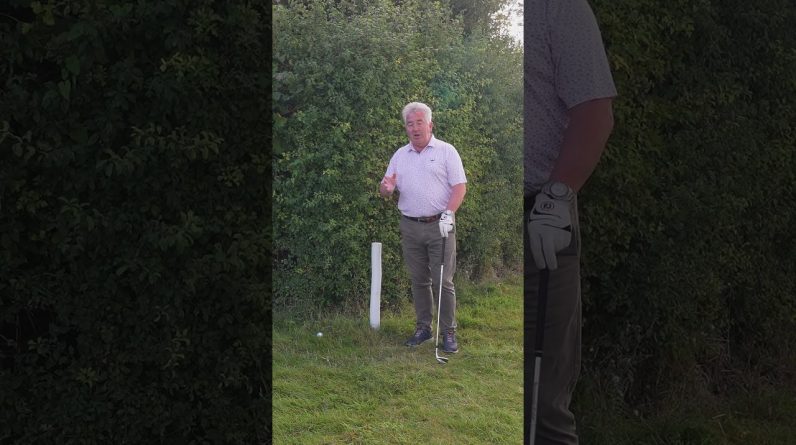Why I Hate My $1200 Golf Driver – Callaway Paradym, Fujikura Ventus
Unpacking the Hype: Callaway Paradym and Fujikura Ventus Shaft
When it comes to golf drivers, the Callaway Paradym combined with the Fujikura Ventus shaft is often praised for its cutting-edge technology and superior performance. Retailing around $1200, this combo promises better distance, accuracy, and feel. However, not every golfer’s experience matches this glowing reputation. In this article,I delve into the reasons why this expensive golf driver has become a source of frustration rather than joy.
Performance disappointments With My Callaway Paradym Driver
At first glance, the Paradym driver looks and feels premium — from its aerodynamic clubhead design to the sleek Fujikura Ventus shaft.yet, the reality hit me during those first few rounds on the course. Despite expert fitting, the driver:
- Produced inconsistent ball flight and spin rates
- Had a “toxic” feel on off-center hits
- Failed to deliver the promised distance gains compared to my old driver
- Showed unpredictable shot dispersion affecting my confidence
Why the Paradym Isn’t Living Up to Expectations
Your driver is your #1 weapon off the tee, so inconsistencies are a dealbreaker. Here are a few technical reasons I suspect might be behind my frustration:
- design Overreach: Callaway’s Paradym driver incorporates AI-designed faces and a complex weight distribution system. While innovative,these features can backfire if the golfer’s swing isn’t exactly matched to the design parameters.
- Shaft Compatibility Issues: The Fujikura Ventus shaft is marketed for higher swing speeds and stability, but if your tempo or swing path is different, it can cause timing issues and poor load/unload during the swing.
- High Expectations & Psychological Impact: For $1200, the pressure to perform perfectly is immense. When the club doesn’t “feel right,” it frequently enough amplifies mental errors.
the Fujikura Ventus Shaft: Not Always a Perfect Match
Many golfers pair their high-end drivers with Fujikura Ventus shafts becuase of their reputation for stability,control,and enhanced ball speed. However, in my case, the shaft did more harm than good.
Issues with Fujikura Ventus in My Setup
- Stiffness & Flex Mismatch: The Ventus shaft is designed for stronger, faster swings. My swing speed was moderately fast but smooth and tempo-based rather than aggressive, causing feel and timing issues.
- Weight Distribution: Ventus shafts tend to have a heavier kick point which altered my natural release and caused inconsistent launch angles.
- Cost vs.Value: At $300+ just for the shaft upgrade, expecting flawless results felt justified. When results faltered, it was a hard pill to swallow.
Side-by-Side Comparison: Paradym with Ventus vs. Previous Setup
| Feature | Callaway Paradym + Fujikura Ventus | Old Driver (TaylorMade SIM with Standard Shaft) |
|---|---|---|
| Average Distance | 260 yards | 265 yards |
| Shot Dispersion | ±22 yards | ±15 yards |
| Feel on Impact | Hollow and “toxic” | Solid and consistent |
| Swing Tempo Compatibility | Poor | Excellent |
| Price | $1200 | $500 |
What I Learned About Choosing Expensive Golf Drivers
Golf equipment is very personal, and what works for the pros or tech reviewers may not work for you. Here are some practical lessons from my experience with this pricey combo:
Practical Tips For Buying High-End Golf Drivers
- Get Thoroughly Fitted: the best clubs are only as good as their fit to your swing mechanics, tempo, and strength.
- Demo Multiple Shafts: Don’t assume the most popular shafts like Fujikura Ventus will perform best for you.
- pay Attention to Feel: Technology is great, but if the driver “feels” off, it will affect your confidence and swing.
- Avoid Getting caught Up in Price: High cost doesn’t guarantee improved performance; sometimes simpler, proven clubs offer better results.
- Consider Your Playing Style: A driver designed for aggressive, fast swings may hinder a smooth, rhythmic swing style.
First-Hand Experience: How I Tried to Fix the Paradym Setup
After noticing the issues, I consulted a PGA professional and club fitter to try to salvage the Paradym and Fujikura Ventus combo:
- Tested alternate shafts: project X HZRDUS, Mitsubishi Tensei
- Adjusted loft and head weights for launch angle optimization
- Worked on swing tempo with swing coach
result? Slight improvements in feel and dispersion but still not on par with my previous driver’s consistency.
Is the Callaway Paradym Driver Worth the $1200 Price Tag?
Like many modern drivers, Callaway Paradym pushes the boundaries of golf technology. But even top-tier gear isn’t immune to:
- Individual swing incompatibilities
- Overhyped marketing expectations
- Costly trial-and-error for golfers without expert fitting
For some, the Paradym with Fujikura Ventus might be a dream combo. For me, it was a regretful investment that taught a valuable lesson — trust your swing first, gear second.
FAQs About Callaway Paradym driver & Fujikura Ventus Shaft
- Q: Is the Fujikura Ventus shaft suitable for all swing speeds?
- A: No. Ventus shafts generally suit higher swing speeds and aggressive tempos better. Slower or smoother swings frequently enough benefit from lighter, more flexible options.
- Q: Can changing shafts fix inconsistent ball flight in the Paradym?
- A: Potentially yes. Shaft characteristics strongly influence launch and spin. Getting fitted for the correct flex, weight, and profile is crucial.
- Q: Are there cheaper alternatives that perform better?
- A: Absolutely.Many mid-range drivers offer consistency and feel rivaling premium models—try before you buy.
- Q: should I sell my Paradym driver?
- A: If it doesn’t suit your game after fitting attempts, yes. Golf equipment should enhance confidence, not diminish it.







